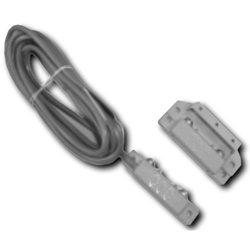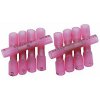Its been so long that I installed it I can't tell what it is other than the GRI label on it and there is 4 wires going to it.
I did purchase it for the HAI panel from Worthington many many years ago.
It is mounted on a small piece of wood which is glued to a brick sitting on the cement floor between the water heater and the storm water well and adjacent to the ejector pump / well such that sump pump/ejector pump or water heater failure will trigger it.
Sort of particular about the rest of the copper plumbing in the home and its terminations as I also utilize a whole house pump to keep the pressure above 30 lbs but less than 60 Ibs; that said I should really not have any problems with the other water connections. I do not utilize any plastic between the copper and water spigots (anywhere - pretty much).
About two years ago wife wasn't happy with the originally contractor installed kitchen spigot et al; so replaced it. While doing that redid all of the plumbing underneath the sink as it was not done according to my liking. Figured the spigot itself was some $300 or more such that it justified my under the sink endeavors.
If it leaks; which I hope it doesn't I will only have myself to blame anyways.
I was though paranoid a bit about the laundry room / floor (its wood) such that I did utilize a water proof underlayment, sealed it then tiled and water proofed that. Never had a problem though relating to any water leaks between the washing machine and the in wall water source / drain. I did also redo the plumbing from the dishwasher to the supply as I was not thrilled with the original installation.
That said I am using 22/4 and have both 12VDC and an EOL resistor in series soldered on it.
I just checked the leads and what zone its going to and there are 4 wires and I noticed I cut the 22/4; installed the EOL and put heat shrink tubing on the 22/4.
I can take pictures of the wiring / shrink tubing stuff.
The 2600 is used to detect the presence of water and to provide a relay signal for controlling
external devices. The switch operates on 12 Volts DC and functions as a Normally Closed Sensor,
for a Normally Closed Loop system. The Red and Black wires are for powering the switch while the
White and Green wires are the relay control wires.
For installation on an alarm panel, the Red wire is connected to the auxiliary 12 volt supply and the
Black wire is connected to negative. The Green and White wires can then be connected to any preselected
Closed Loop terminal. A resistor can be connected in series with either the Green or White
wire for those panels that require end-of-line resistance.
For applications other than alarm panels, see switch specifications or contact factory.
After installation these units should be tested with water and inspected annually. If there is any
corrosion or damage the sensor should be replaced.



